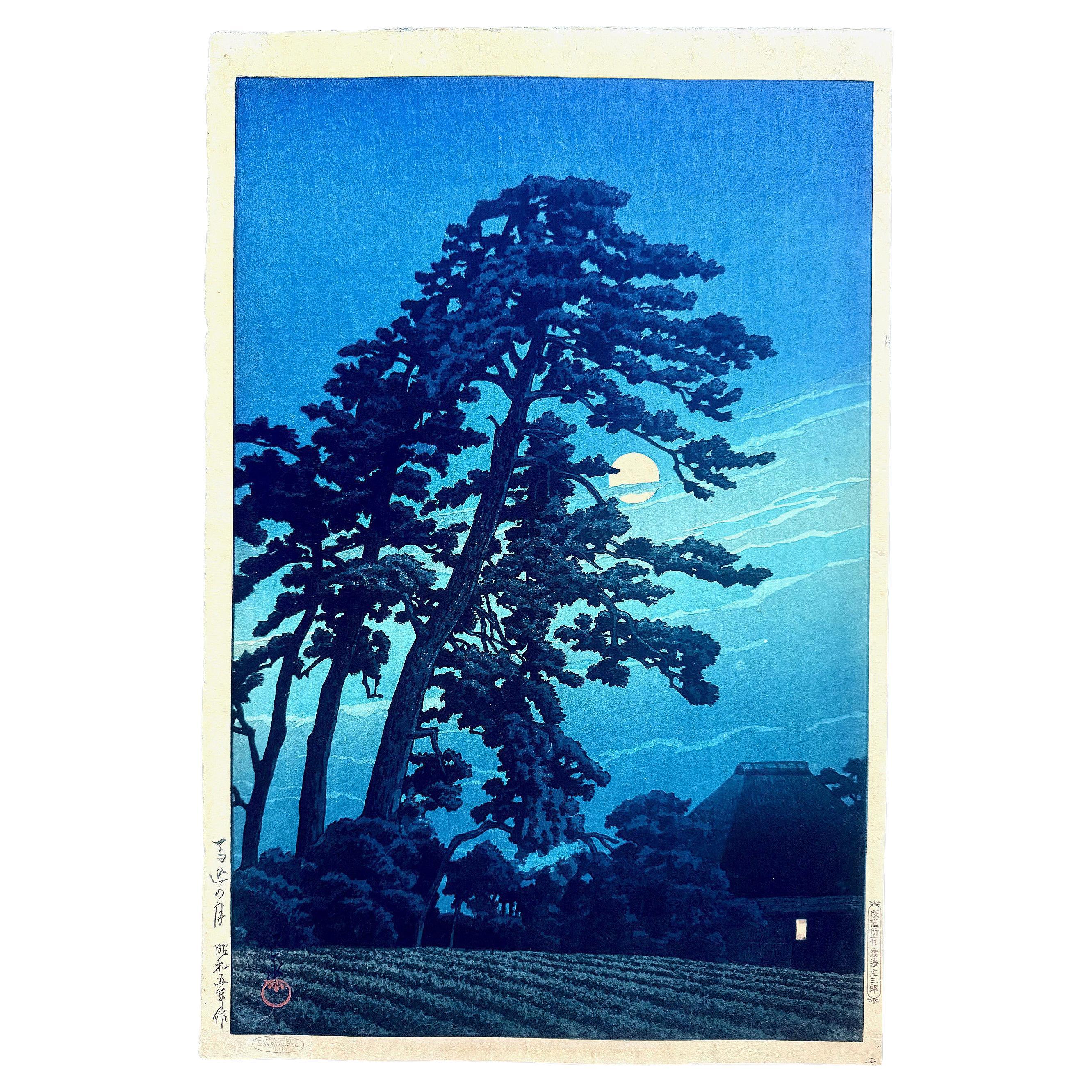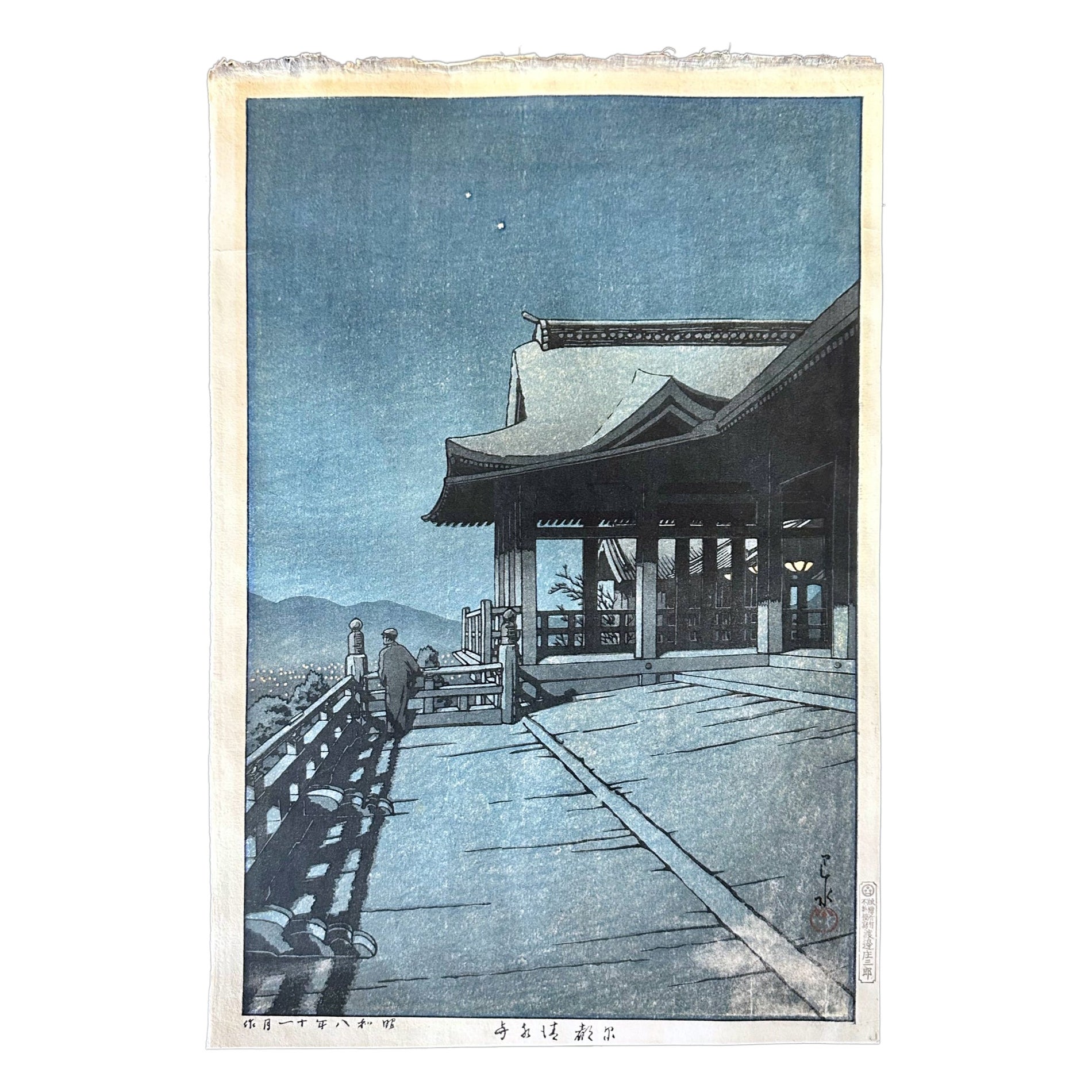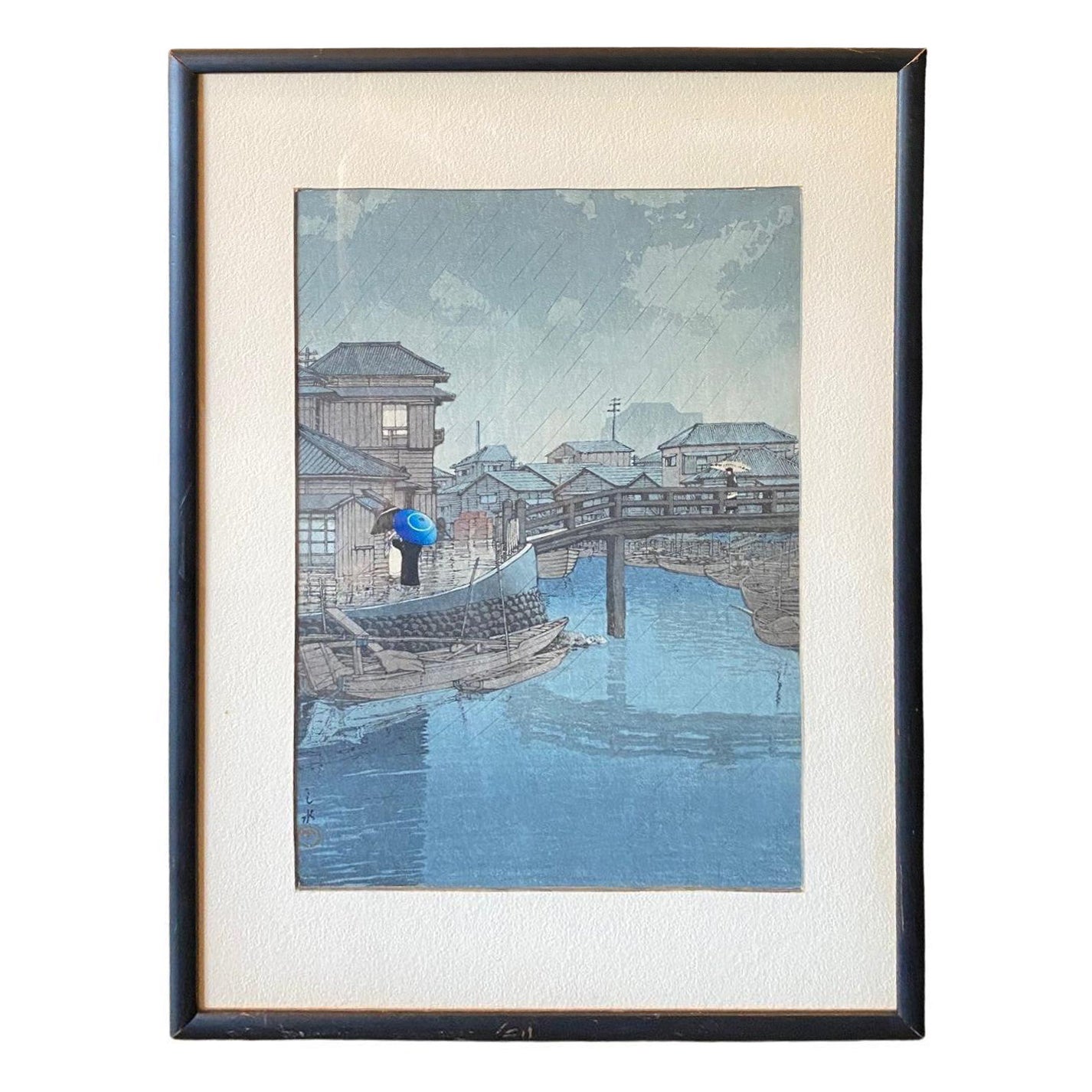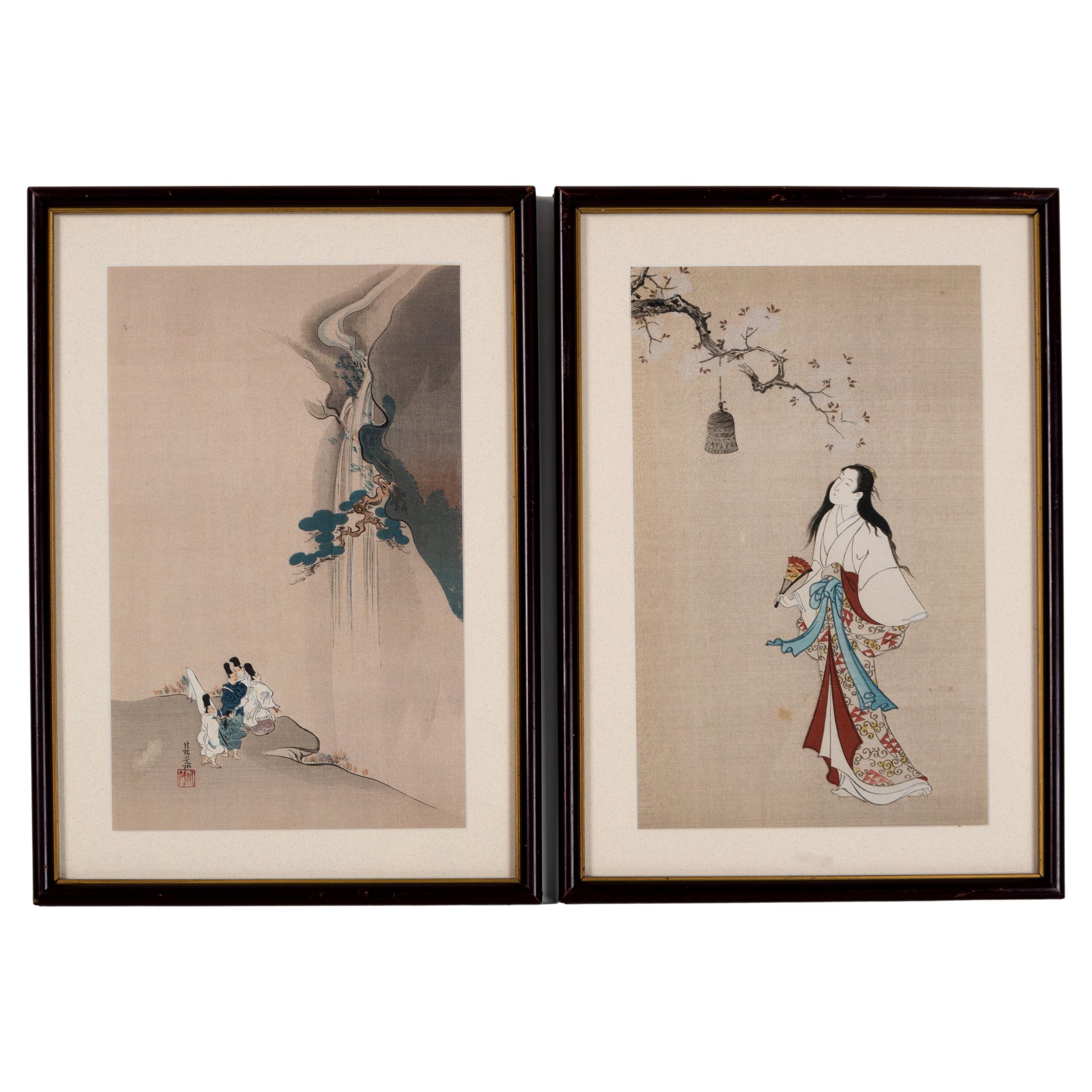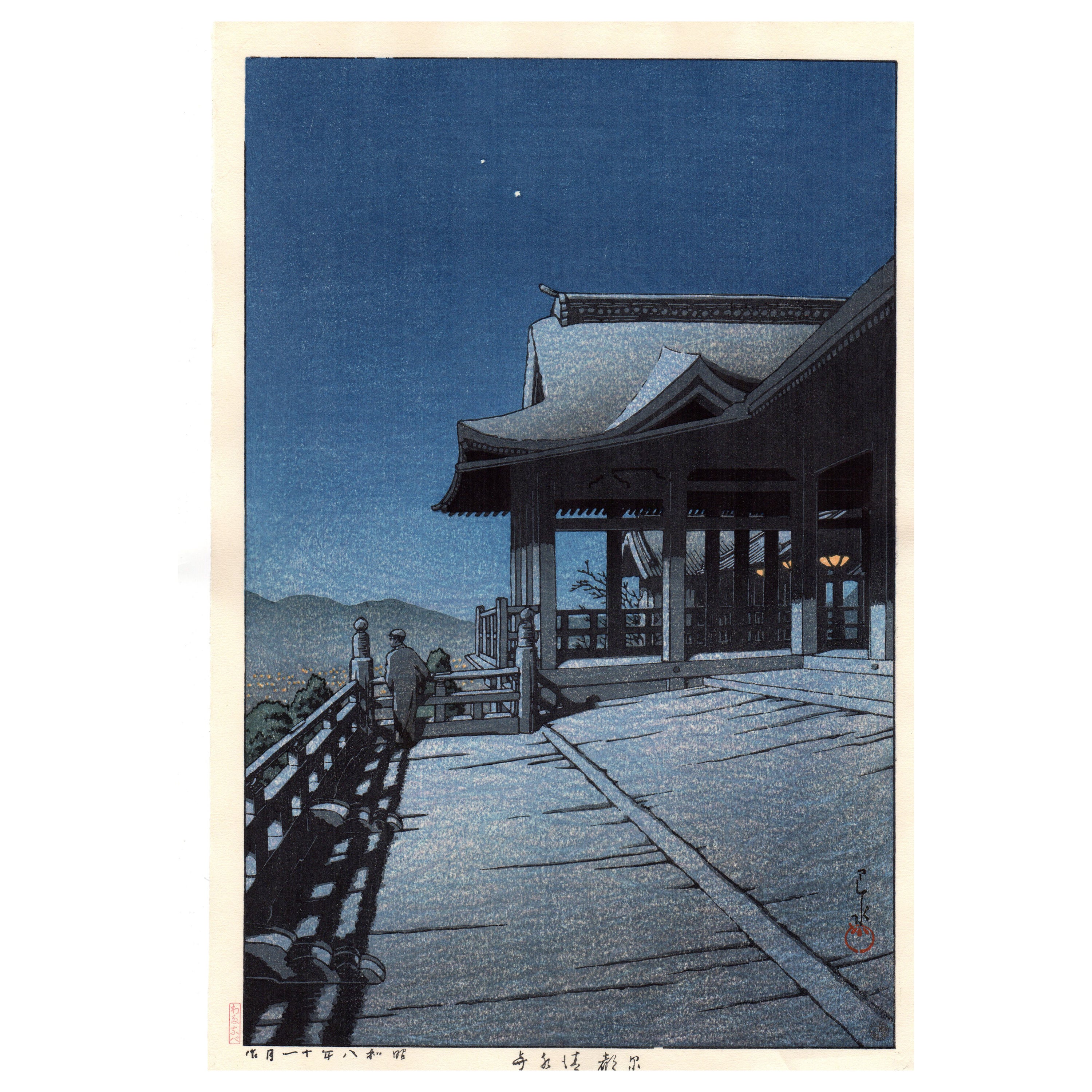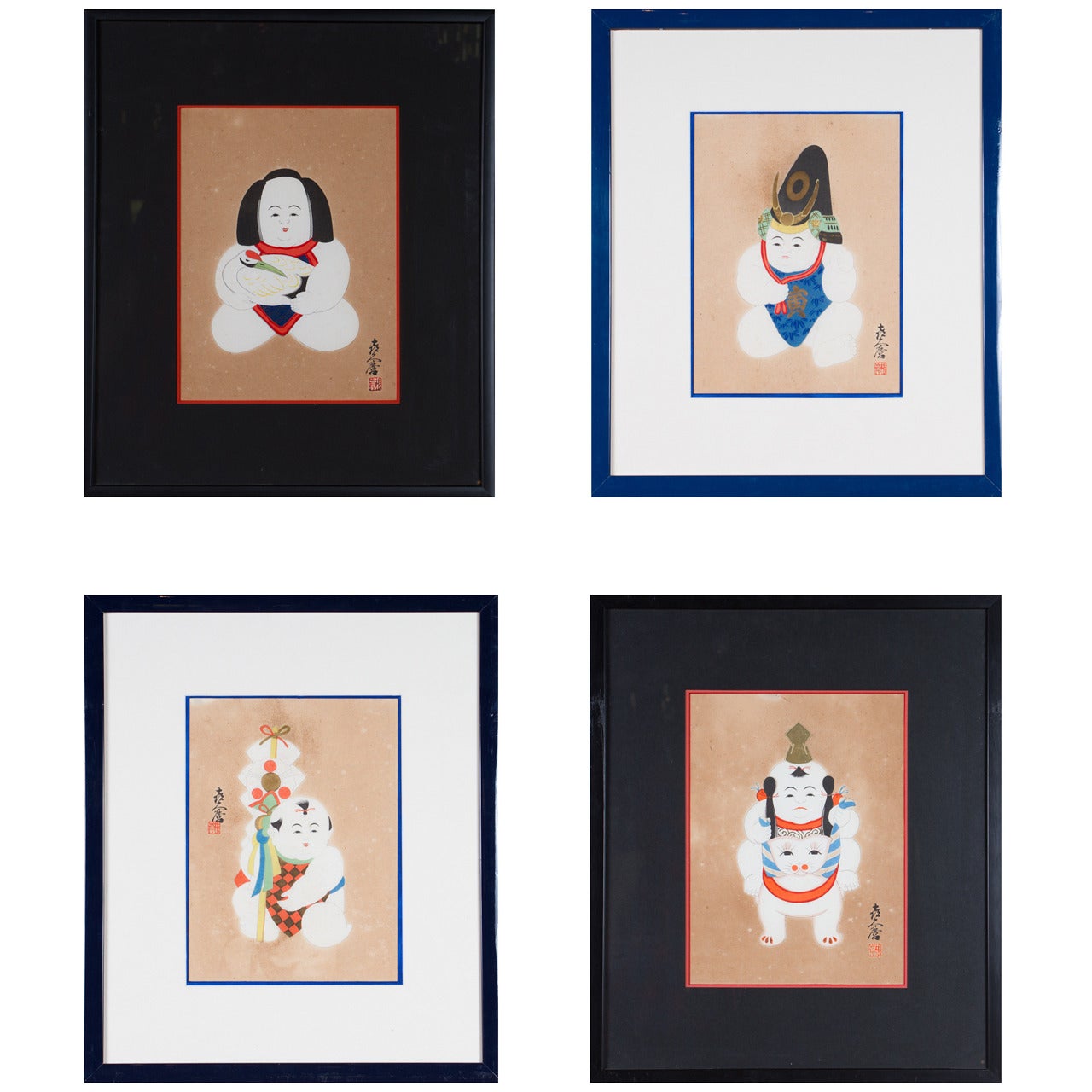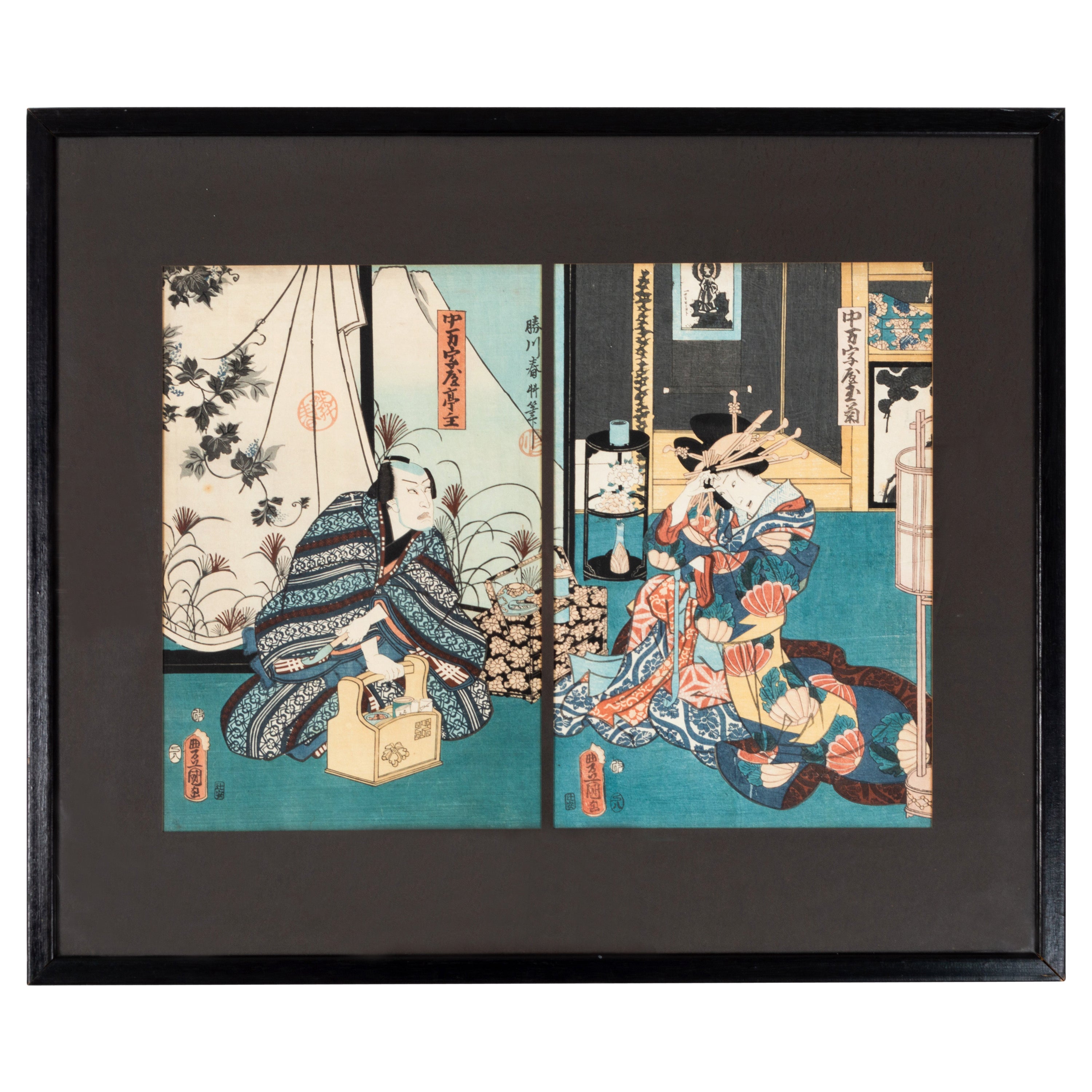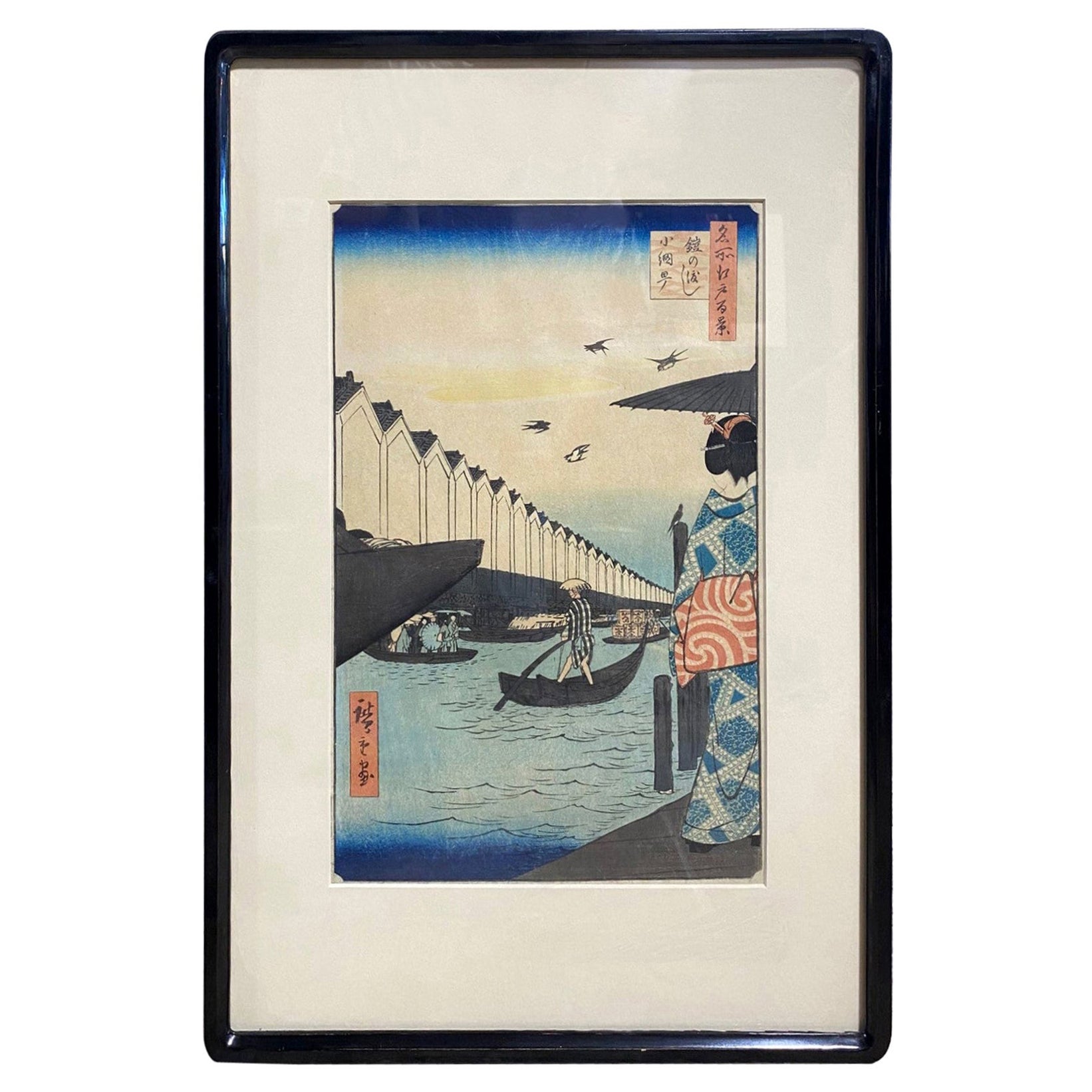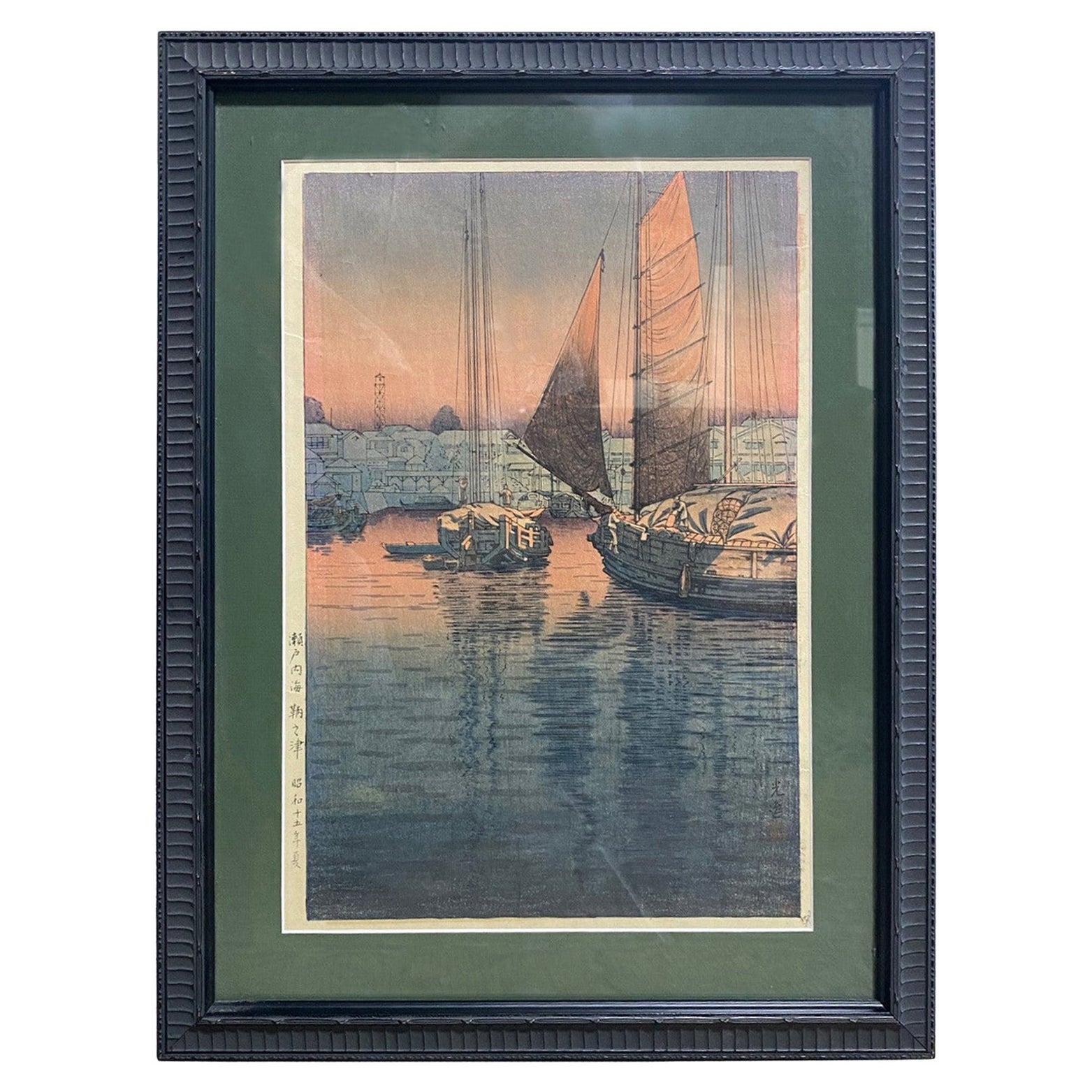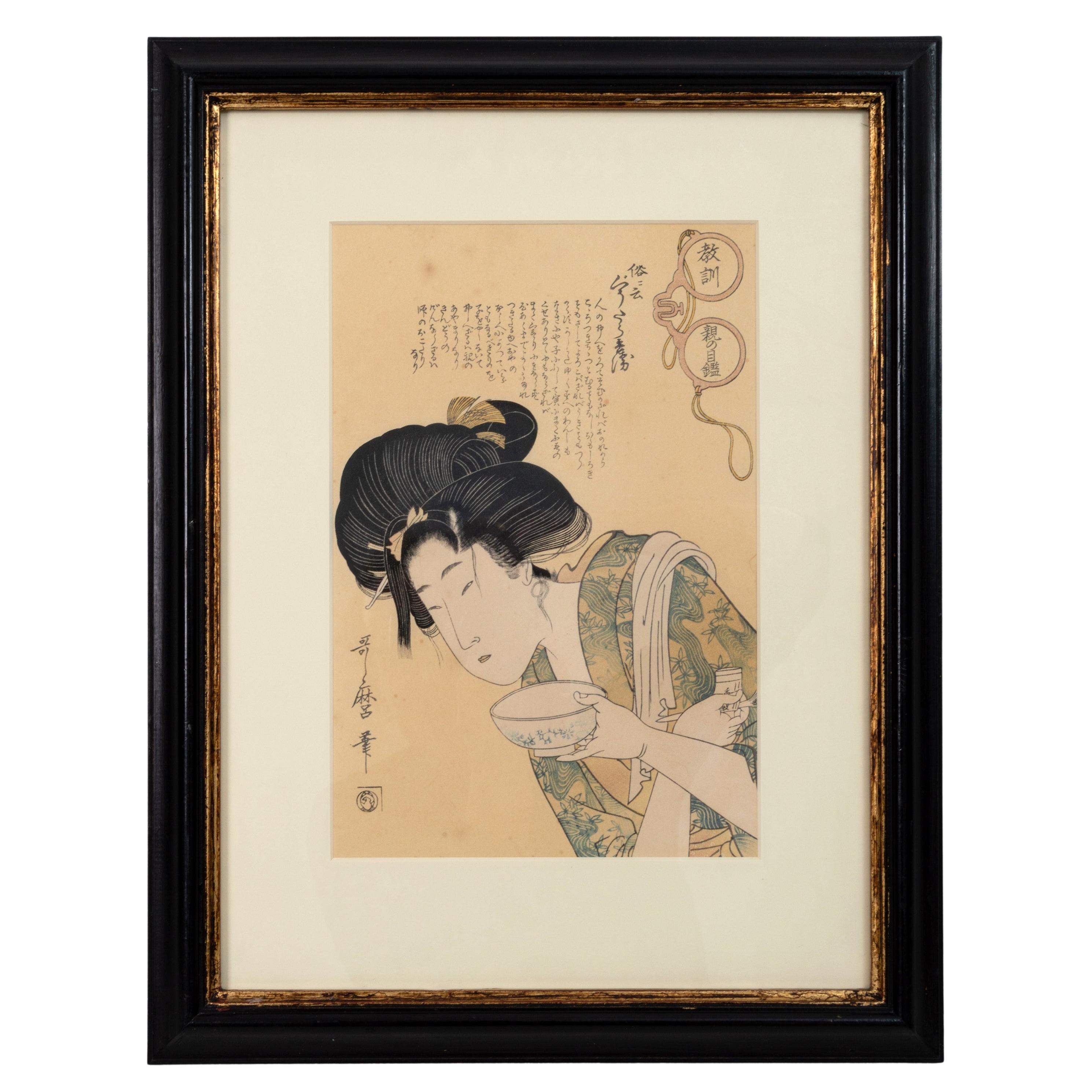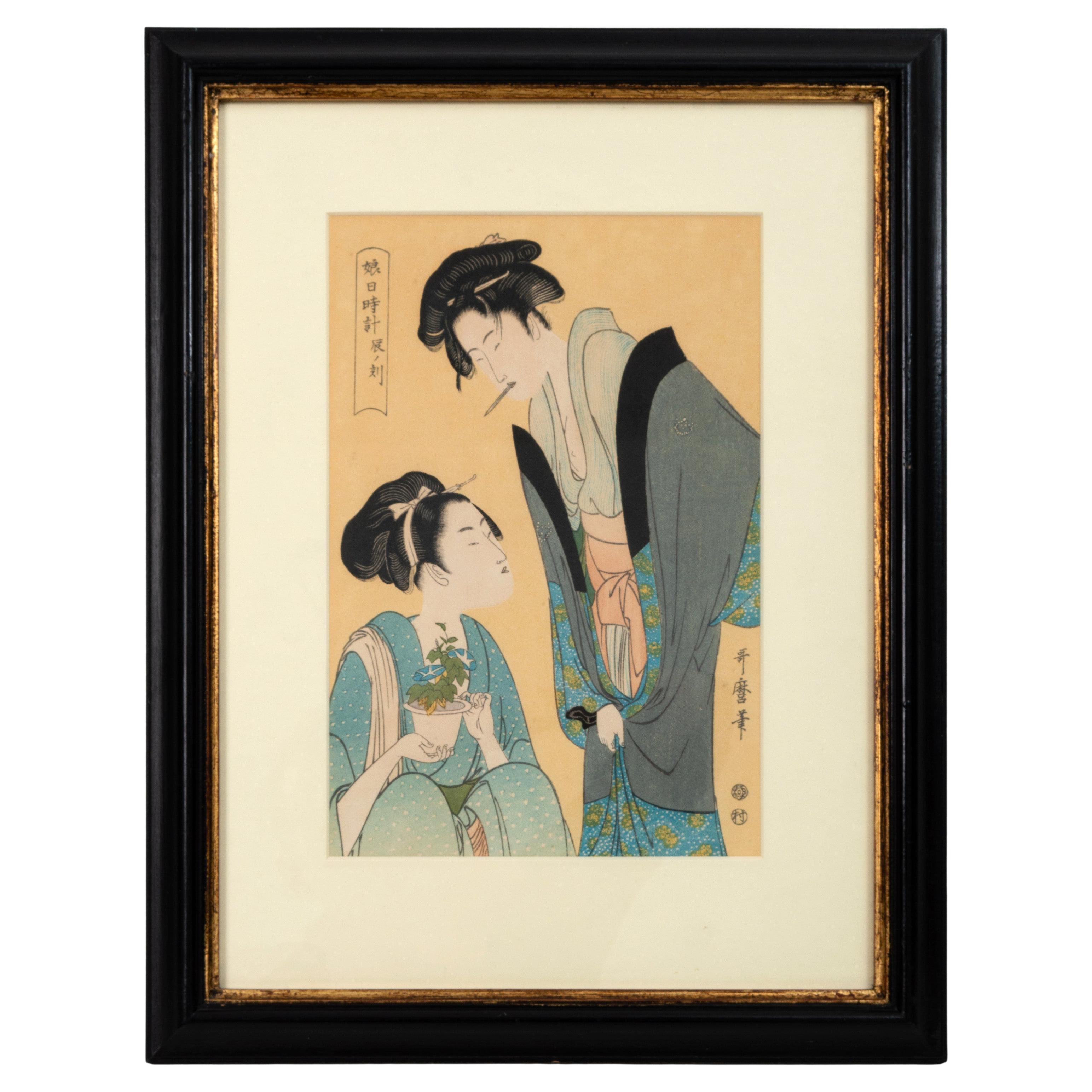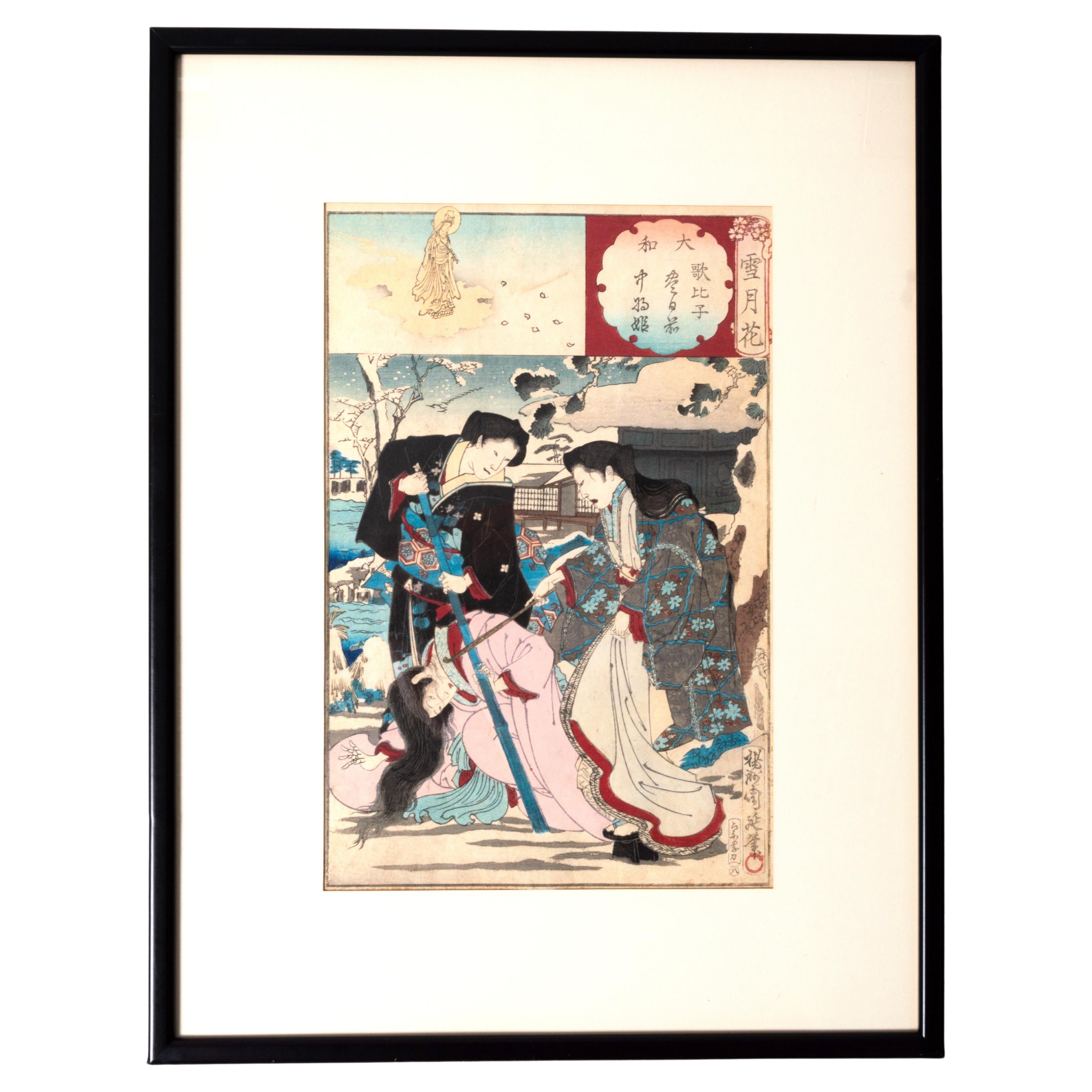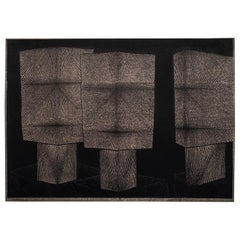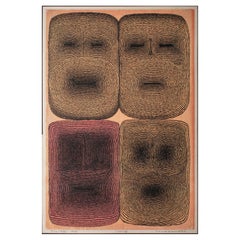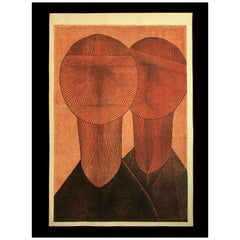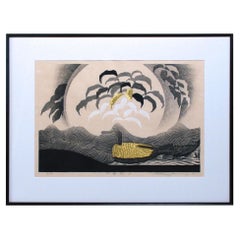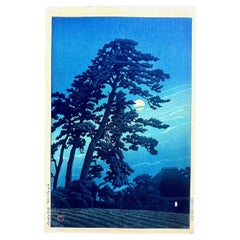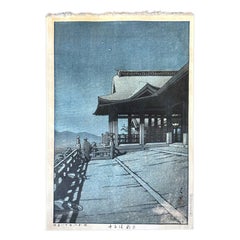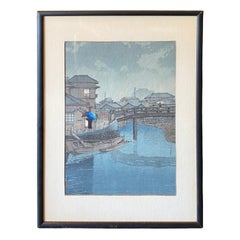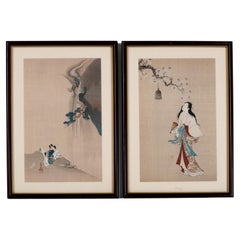
Early 20th Century Kawase Hasui Woodblock Print "Rainy Night at Maekawa"
View Similar Items
Want more images or videos?
Request additional images or videos from the seller
1 of 5
Early 20th Century Kawase Hasui Woodblock Print "Rainy Night at Maekawa"
$1,760List Price
About the Item
- Creator:Kawase Hasui 1 (Artist)
- Dimensions:Height: 15.5 in (39.37 cm)Width: 10.25 in (26.04 cm)Depth: 0.82 in (2.09 cm)
- Style:Mid-Century Modern (In the Style Of)
- Materials and Techniques:
- Place of Origin:
- Period:
- Date of Manufacture:1933-1941
- Condition:Condition: Some toning overall, pin hole upper left corner, else fine.
- Seller Location:Point Richmond, CA
- Reference Number:Seller: ZK#7397 1stDibs: LU1778210569633
About the Seller
5.0
Platinum Seller
Premium sellers with a 4.7+ rating and 24-hour response times
Established in 1999
1stDibs seller since 2015
687 sales on 1stDibs
Typical response time: 2 hours
Authenticity Guarantee
In the unlikely event there’s an issue with an item’s authenticity, contact us within 1 year for a full refund. DetailsMoney-Back Guarantee
If your item is not as described, is damaged in transit, or does not arrive, contact us within 7 days for a full refund. Details24-Hour Cancellation
You have a 24-hour grace period in which to reconsider your purchase, with no questions asked.Vetted Professional Sellers
Our world-class sellers must adhere to strict standards for service and quality, maintaining the integrity of our listings.Price-Match Guarantee
If you find that a seller listed the same item for a lower price elsewhere, we’ll match it.Trusted Global Delivery
Our best-in-class carrier network provides specialized shipping options worldwide, including custom delivery.More From This Seller
View All1981 Graphic Woodblock Print by Tomio Kinoshita, Japan
By Tomio Kinoshita
Located in Point Richmond, CA
Tomio Kinoshita (1923 - 2014)
Masks (No. 4), 1981
Woodblock print
Image Size: 22 high by 31 inches wide (56 by 79 cm)
Paper Size: 22.75 high by 31.5 inches wide (57.8 by 80 cm)
...
Category
Vintage 1980s Japanese Mid-Century Modern Prints
Materials
Paper
1969 Graphic Woodblock Print by Tomio Kinoshita, Japan
By Tomio Kinoshita
Located in Point Richmond, CA
Faces (4 Faces), 1969
Tomio Kinoshita (1923-2014), Japan
Woodblock print
Paper, pigment, sumi ink
Image: 27 high by 18.25 inches wide (68.5 by 46.4 cm)
Paper size: 28 high by 19...
Category
Vintage 1960s Japanese Mid-Century Modern Prints
Materials
Paper
1960 Big Boys, Woodblock Print by Tomio Kinoshita, Japan
By Tomio Kinoshita
Located in Point Richmond, CA
Tomio Kinoshita (1923 – 2014)
Big Boys, 1960
Woodblock print
Image size: 32.75 high by 22 inches wide (83 by 56 cm)
Paper size: 35.5 high by 23.75 inches wide (90 by 60.3 cm)
Signed: in pencil lower right, Tomio Kinoshita
Titled: in pencil at lower left
Edition: 30/50
Condition: Very good
The woodblock for this large print was carved in 1958, just three years after Kinoshita’s began creating woodblocks. This print was signed and dated in 1960, but not numbered; prints were also pulled from this block in the 1970s, so it must have been one of more popular images.
One of his students has written, “As time progressed further, the postwar era saw improvements in nutrition, and children became taller and heavier than in the past, but their lack of physical exercise and severely inferior physical abilities became a social problem; this is ironically depicted in Big Boys.” In 1963, Kinoshita told him that he had just finished pulling a print of this image in response to a request from Unichi Hiratsuka...
Category
Vintage 1960s Japanese Mid-Century Modern Prints
Materials
Paper
Reika Iwami, Contemporary Japanese woodblock print
By Reika Iwami
Located in Point Richmond, CA
Contemporary Japanese woodblock print (Sosaku hanga) by the female artist Reika Iwami (b. 1927, Tokyo) titled “Water Fantasy A”of a setting full moon on th...
Category
Vintage 1980s Japanese International Style Prints
Materials
Paper
Japanese Collagraph Print by Tsuguo Yanai, "Broken Heart"
By Tsuguo Yanai
Located in Point Richmond, CA
Japanese Collagraph Print by Tsuguo Yanai (b. 1953, Hagi, Yamaguchi), titled “Broken Heart” in Japanese with the printing number 2/30 under the image on the left and pencil signatur...
Category
Vintage 1980s Japanese International Style Prints
Materials
Paper
Antique Chinese Printed Ink Rubbing of Panthaka Arhat, (scroll mounted)
Located in Point Richmond, CA
Chinese ink rubbing printing depicting Panthaka Arhat, no.4 of the 16 arhat images immortalized in stone at the former stupa at Shengyin Temple. Depicted here sitting on a rock with a book in his left hand and snapping his fingers in his right hand, symbolic of the speed at which he obtained enlightenment, accompanied by a beggar’s bowl and an incense burner, complete with colophons and silk scroll mounting. The Emperor Qianlong ordered the stone stele to be carved in 1764 after the arhat designs painted by the famed artist Guanxiu (832-912). Even though the temple was destroyed in the Taiping rebellion, the steles remain and have been reinstalled at the Hangzhou Stele Forest. Condition: Creases from rolling, otherwise fine condition. Mounting: 58” x 22”. 19th Century. Ex Collection: Frank “Till” & Peggy Durdin, San Diego.
For other rubbings of this stele see:
Penn Museum, object number 2010-26-4
The Metropolitan Museum of Art AN#: 59.195.15
Fine Arts Library of Harvard University, record id: W280021_urn-3:FHCL:478850
For another example of this image rendered in jade and lacquer see: “Screen Paintings of Guanxiu’s Sixteen Arhats in the Collection of the Palace Museum” Luo Wehhua translated by Bruce Doar, Orientations, September 2010, p. 104. In this article the image is identified as the sixteenth arhat Abheda, It is explained in this article that Qianlong re-identified the arhats, thus the 16th Arhat attribution for this image. Also in this article the identical colophon by Qianlong above the image is translated as: “These accurate portraits of the Sixteen Arhats were created by the Tang Dynasty painter Guanxiu, as recorded in Xuanhe Huapu (Record of paintings in the Xuanhe Reign), and during the millennium from the Guangming reign period to the present day, the original works were to be found in Zhejiang, where they were housed in the collection of Shengyin Temple in Qiantang (Huangzhou). In spring of the dingchou year (1757) of his reign, the Qianlong emperor undertook a southern tour of inspection and stayed at an imperial lodge on the West Lake. He went to the temple to pay his respects and there he saw the arhats on display and wrote a description of these marvels. The sequence of the arhats and their names had been passed down since ancient times, but they did not correspond to their Sanskrit titles; the sequence of the arhat names conformed instead to the interpretation of the Sanskrit classics by the Zhangjia State Preceptor. The emperor penned the original names and positions in the sequence below each of the figures in accordance with the readings supplied in Tongwen Yuntong (Unified Rhymes), and below each he penned an encomium, which he signed. Then the images were returned to the collection, to be passed down as a perpetual treasure. Now, the fourth great arhat had long gone missing and we did not know where his painting was. But it was merely a trifling matter of matching the images with the names, and now surely we have found him! This I, the emperor, believe.”
All 16 of these rubbings can be found in the Rubel Chinese Rubbings Collection at the Fine Arts Library of Harvard University with the following descriptive historical note: “Rubbing from stele depicting No. 4 of 16 arhats (Lohans, Buddhist saints) -- Nan ti mi duo luo qing you, Panthaka Arhat. Original painting attributed to Guanxiu, 832-912. Inscriptions written by Hongli, Emperor Qianlong (Gaozong, 1711-1799) of Qing Dynasty. 7 seals of Qianlong follow the inscriptions. Script style: in xing shu. Shi liu zun zhe -- "The 16 noble ones" are 16 lohans. Lohans are also called "a-lo-han" based on the transliteration of the Sanskrit term "arhat." (Japanese: Rakan; Chinese: Lohan; Tibetan: Gnas-brtan). Arhats or Arahants are saints or sages said to have renounced nirvana (freedom from the cycle of suffering and rebirth), vowed to remain in the world to protect the Dharma and propagate the Law of the Buddha in order to devote themselves more effectively to the relief of human misery, like the Bodhisattvas. These 16 Arhats, personal disciples distinguished by the Buddha, formed part of the 500 claimed by tradition to have attended the First Council in Rajagrha. The names and abodes of these 16 arhats are given in a work entitled "Record on the Duration of the Law, spoken by the Great arhat Nadimitra," which was translated into Chinese by the famous pilgrim Xuanzang (596-664) in 654. 16 lohans are quite often represented, especially in China and Japan, in sculpture and painting, in poses and with attributes. Every lohan can be easily with special icongraphic characteristics. Guanxiu (Jiang Deyin or Deyuan, a Buddhist monk also named Master Chan Yue, 832-912) -- painter during late Tang to Five Dynasties, specialized in painting lohan figures. Legend has it that the first portraits of the 18 Lohans...
Category
Antique 19th Century Chinese Qing Prints
Materials
Paper
You May Also Like
Rare Prewar First Edition Japanese Woodblock Print Moon at Magome Kawase Hasui
By Kawase Hasui 1
Located in Atlanta, GA
"Umagome no tsuki (Moon at Umagome) from the series Tokyo Nijukkei (20 Views of Tokyo), is inarguably one of the most beloved works by Japanese artist Kawase Hasui (1883-1951) create...
Category
Vintage 1930s Japanese Modern Prints
Materials
Paper
Early Japanese Woodblock Print Kiyomizu-dera Temple in Kyoto by Kawase Hasui
By Kawase Hasui 1
Located in Atlanta, GA
An early edition Japanese woodblock print "Kiyomizu-dera Temple in Kyoto by Kawase Hasui (1883-1957) from the series Collected Views of Japan II, Kansai Edition (Nihon fukei shu II Kansai hen). The series was created in 1933 and this is an early edition with the publisher copyright seal "Hanken shoyu fukyo mosha Watanabe Shozaburo" dated from 1931-1941. Signed and sealed Hasui in plate. Date and titled on the lower margin.
For a comparable print, see lot 86 in Sotheby's London Auction Landscape to City: A Collection of 20th Century Japanese Prints...
Category
Vintage 1930s Japanese Showa Prints
Materials
Paper
Kawase Hasui Japanese Woodblock Print Shinagawa From Views of the Tokaido Series
By Kawase Hasui 1
Located in Studio City, CA
A beautiful and brightly colored woodblock print by famed Japanese artist and Shin-Hanga master printmaker Kawase Hasui. This print, titled "Shinagawa" is from his series Selection o...
Category
Vintage 1930s Japanese Showa Prints
Materials
Paper
Pair Early 20th Century Japanese Framed Woodblock Prints C.1925
Located in London, GB
Pair Early 20th Century Japanese Woodblock Prints
A Pair Early 20th Century Japanese Framed Woodblock Prints Of Old Masterpiec...
Category
20th Century Prints
Materials
Paper
Authentic Japanese Woodblock Print by Kawase Hasui - Kiyomizu Temple in Kyoto
Located in Norton, MA
Description
Kawase Hasui - Kiyomizu Temple in Kyoto, woodblock, 1933, published by The S. Watanabe Color Print Co., with the 7mm and Heisei seals, 15.25" x 10.25".
This item is in ex...
Category
Mid-20th Century Japanese Prints
Materials
Paper
Set of 16 Mid-20th Century Prints
Located in Montreal, QC
Whimsical set of 16 Mid-20th Century Japanese woodblock prints. Potentially available in blocks of four.
Category
Mid-20th Century Japanese Prints
Materials
Paper
$6,800 / set
Recently Viewed
View AllMore Ways To Browse
3 D Asian Paper Art
Chinese Antiques Metal
Indonesia Mid Century
Timor Indonesia
Framed Asian Plate
Antique Butterflies Collection
Japanese Stamps Rare
Meiji Woodblock
Japanese Edo Period Prints
Shanghai Art Deco
Asian Dutch Colonial Furniture
Amsterdam Batavia
Japanese Hawks
Asian Wood Block Prints
Antique Accordion
Kiyoshi Saito
Saito Woodblock
Kiyoshi Saito Woodblock Print
